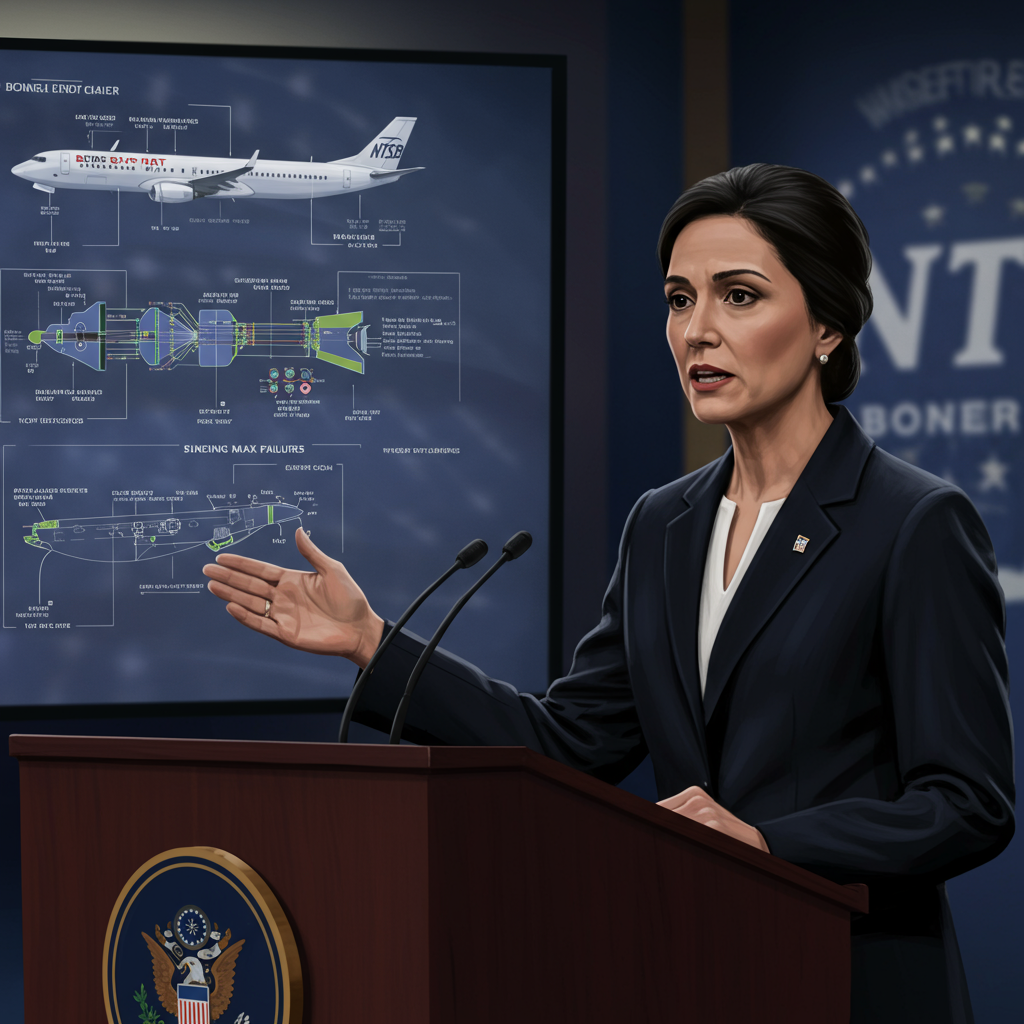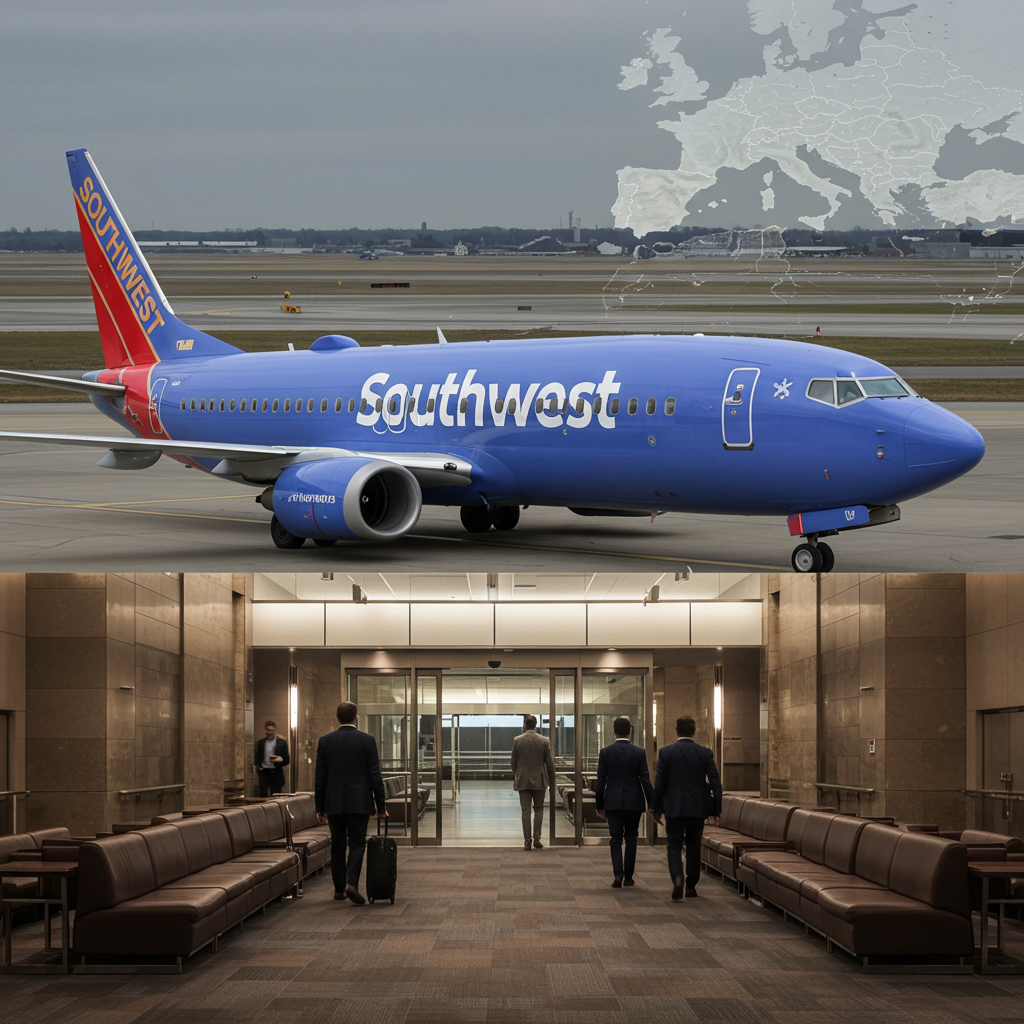The National Transportation Safety Board (NTSB) has unequivocally stated that the terrifying mid-air incident involving an Alaska Airlines Boeing 737 Max, where a door plug panel blew off the plane, was the direct result of “multiple system failures” within Boeing’s manufacturing process and inadequate federal oversight.
After a detailed 17-month investigation into the January 2024 event aboard Alaska Airlines Flight 1282, NTSB Chair Jennifer Homendy concluded that the accident “never should have happened.” She praised the heroic actions of the crew and passengers, which ensured everyone survived, but emphasized that their bravery was necessary only because fundamental safety checks failed.
The investigation revealed the immediate cause: four bolts crucial for securing the door plug panel were removed at a Boeing factory during a repair and were never replaced. The panel, which covers an unused emergency exit on certain 737 Max 9 configurations, had been removed to allow workers to fix damaged rivets. Disturbingly, investigators found evidence that the door plug had been gradually moving upward over the 154 flights the aircraft completed before the catastrophic blowout.
Deep-Rooted Manufacturing Problems at Boeing
The NTSB’s findings went far beyond the missing bolts, uncovering significant systemic issues at Boeing’s manufacturing facilities:
Pressure on Workers: Factory employees reported feeling pressured to work too quickly and keep the assembly line moving, creating an environment where mistakes are made.
Inadequate Training: Workers were assigned tasks they weren’t qualified for, including complex work on door plugs. Specifically concerning the accident aircraft, only one of the 24 individuals on the door team had prior experience removing a door plug, and that person was absent when the work was performed. Many newer hires lacked manufacturing backgrounds and received insufficient on-the-job training.
Insufficient Safety Practices: Boeing lacked robust safety practices and documentation protocols to ensure critical steps, like re-installing the bolts after removing the door plug, were completed and verified.
Investigators noted that Boeing had been required to adopt more rigorous safety standards following a 2015 settlement, but the NTSB found this plan was still under development and had only been in place for two years before the specific Alaska Airlines plane was manufactured.
FAA Oversight Criticized
The NTSB also criticized the Federal Aviation Administration’s (FAA) oversight of Boeing. The investigation concluded that the FAA’s inspection system was not effective at catching systemic manufacturing failures. Despite conducting over 50 audits of Boeing’s manufacturing annually, the NTSB found a lack of clear standards for these audits. The agency was also noted for routinely discarding past inspection records and not consistently basing its inspection plans on previous findings and systemic problems.
The Mid-Flight Emergency
The incident occurred minutes after takeoff from Portland, Oregon, as the plane climbed through 16,000 feet. The sudden detachment of the 2-foot-by-4-foot panel caused a rapid decompression, creating a roaring vacuum that sucked objects out of the cabin, including cell phones. Oxygen masks automatically dropped as wind and noise filled the cabin.
Fortunately, the two seats immediately adjacent to the opening were unoccupied. While seven passengers and one flight attendant sustained minor injuries, there were no fatalities. The pilots successfully turned the aircraft around and landed safely back at Portland.
NTSB Issues Recommendations
Based on their findings, the NTSB issued several key recommendations to prevent similar accidents:
Redesign & Retrofit: Boeing and its supplier, Spirit AeroSystems, should redesign door plugs to include a secondary retention system and retrofit all existing 737 Max jets with these enhanced panels.
Improve Boeing Processes: Boeing must continue to improve employee training, strengthen documentation procedures, and ensure employees throughout the company understand and adhere to safety plans.
Enhance FAA Oversight: The FAA should significantly step up audits and inspections, focusing on areas identified by past problems and systemic issues, and conduct an assessment of Boeing’s safety culture.
- Review Child Restraints: The NTSB also recommended the FAA reassess its policy regarding children under two years old not being required to travel in their own seats with restraints, noting the potential danger during such events.
- www.wptv.com
- jcpost.com
Context of Ongoing Boeing Challenges
This incident adds to a challenging period for Boeing, particularly concerning the 737 Max model. The aircraft was grounded worldwide for nearly two years following two fatal crashes in 2018 and 2019, which were linked to a flawed flight control system. More recently, the Justice Department reached an agreement allowing Boeing to avoid criminal prosecution for allegedly misleading regulators before those earlier crashes.
In the wake of the Alaska Airlines incident and ongoing concerns, the FAA has capped Boeing’s 737 Max production rate. Boeing has appointed a new CEO, Kelly Ortberg, and created a new senior vice president position focused on quality to address the manufacturing issues. Both Boeing and the FAA have stated they are taking steps to improve safety and oversight following the NTSB’s detailed findings.




